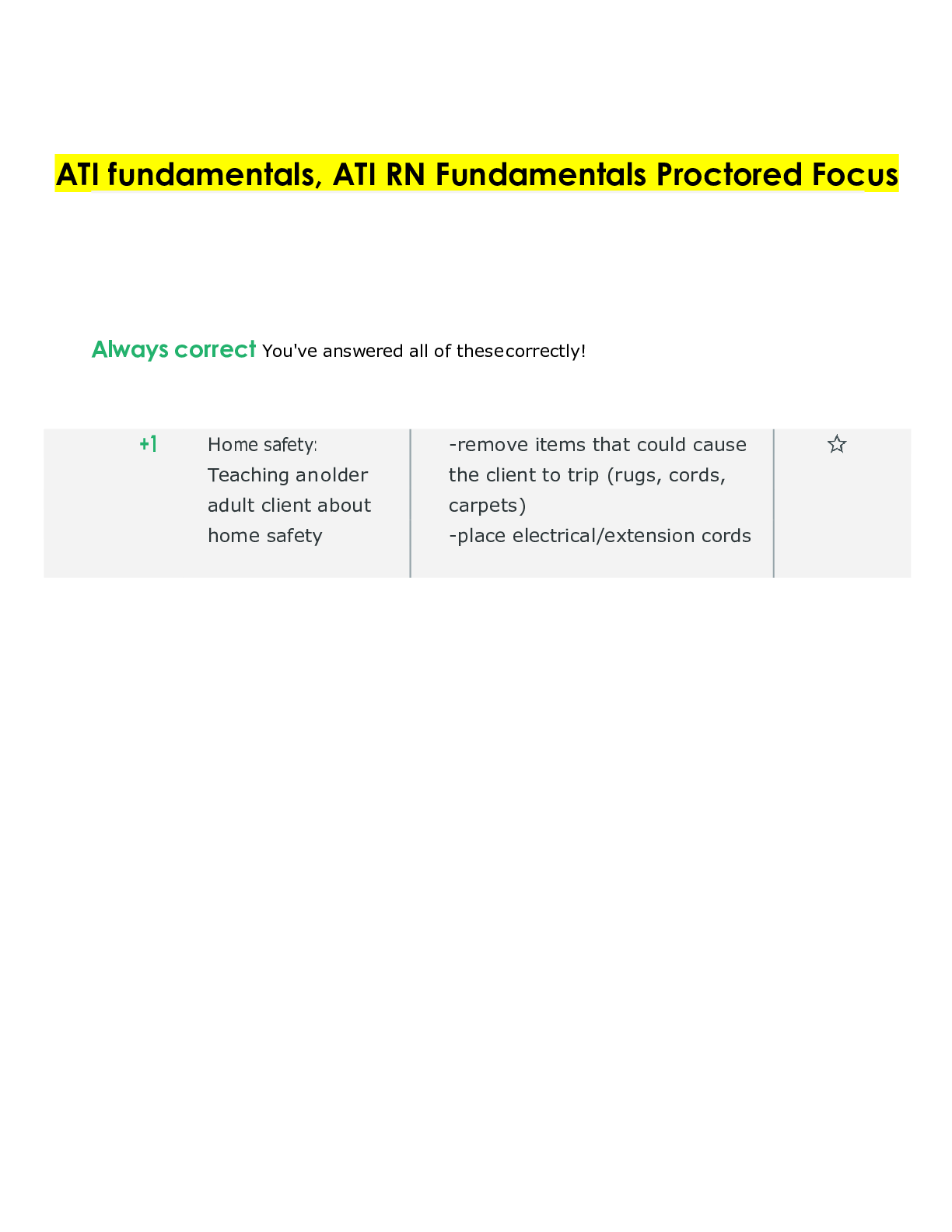ati fundamentals > QUESTIONS & ANSWERS > ATI fundamentals, ATI RN Fundamentals Proctored Focus (All)
ATI fundamentals, ATI RN Fundamentals Proctored Focus
Document Content and Description Below
1. Normal level for WBC's: 4,500 - 11,000 2. Normal lab values for Hbg male: 13.5-17.5 g/dL 3. Normal lab values for Hbg female: 12-16 g/dL 4. Normal lab values for Na: 135-145 mEq/L 5. Normal lab... values for K: 3.5-5 mEq/L 6. Normal lab values for Cl: 95-105 mEq/L 7. Normal lab values for HCO3: 22-29 mEq/L 8. Normal BUN lab values: 7-18 mg/dL 9. Normal Creatine lab values: 0.6- 1.2 mg/dL 10. Normal Glucose lab values: 70-110 mg/dL 11. Normal Calcium lab values: 8.5-10.5 mg/dL 12. Normal total protein lab values: 6-8 g/dL 13. Normal Alb lab values: 3.5-6 g/dL 14. Normal total Bili: 0-1 mg/dL 15. How many grams are in 1 oz: 28.35 16. How many mL are in 1 oz: 29.57 17. How many oz are in 1 cup?: 8 oz 18. How many liters are in 1 gallon?: 3.8 19. What are normal values of pH for ABG: 7.35-7.45 20. What are normal values of PaCO2?: 35-45 mmHg 21. What are normal values of PaO2?: 80-100 mmHg 22. What are normal values of HCO3: 24-30 mEq/L 23. What are the steps in removing an artificial eye?: pull down the lower lip with index finger & exert slight pressure, allowing to slide over lower lid and grab with free hand -store artificial eye in labeled container filled with tap water or saline 24. What are the steps in inserting an artificial eye?: lift upper and lower lid to insert and blink until sets 25. How do you wash an artificial eye?: Wash with warm, normal saline, with soft gauze or clean tap waterATI fundamentals, ATI RN Fundamentals Proctored Focus 2 / 14 26. How do you properly irrigate an ear: -Have pt sit or lie on side with the affected ear UP. -Using a bulb-irrigating syringe or Walter Pik set on No 2, gently wash ear with warm solution, directing flow toward the superior aspect of the ear canal. 27. Nonblanchable erythema indicates the skin has been damaged by what?- : Pressure 28. Explain what is happening in the S1 sound: "Lub" sound- tricuspid and mitral valves snap shut @ beginning of systole. It is loudest at the apex of the heart. 29. Explain what is happening in the S2 sound: "Dub" sound- Aortic and Pulmonic valves shut at beginning of diastole. This is heard best at the base of the <3 30. What does a split S2 mean?: Electrical conduction may be delayed on one side so ventricles might not close at the same time - may sound like a "stutter" 31. S3 is heard in pt's with what?: CHF. It follows S2 32. S4 is heard in pt's with what?: HTN, CAD, MI. 33. What is a murmur?: occurs between S1 and S2. It should be silent there, but with a murmur there is a whooshing sound.....this typically happens if a valve isn't open wide enough (Stenotic) or if a valve doesn't close tightly enough and blood leaks back 34. Grade 1 murmurs are typically to hear: difficult 35. Grade 6 murmurs are typically to hear: easy to hear 36. Grade 4 and above murmurs are considered and are accompanied by a : loud murmurs. palpable thrill 37. Pericardial friction rub: pericardium (membrane around the heart) becomes inflamed. It causes high pitched, scratchy sound. It is loaded at apex 38. What is the Valsalva maneuver?: holding breath and bearing down. Usually done to check for hernia's 39. When suctioning a trach, do you apply suction before or after insertion?Do you use a rotation method?: After insertion.Yes 40. Do not insert into artificial airway because it increases the risk of infection: normal saline. 41. insert artificial airway until : feel resistance or patient starts coughing.ATI fundamentals, ATI RN Fundamentals Proctored Focus 3 / 14 42. If pt needs more suctioning, repeat procedure only more times & wait at least minute: 1-2. 1 43. To rinse catheter, use mL of : 5-10 mL. Normal saline 44. Elderly people and children need a gauge for IV's: larger # 45. Every time access port you should : clean it 46. NEVER infuse : potassium chloride 47. Change IV sites every : 72 hours 48. Change tubing every : 96 hours 49. Fluids should not hang more than : 24 hours 50. Infiltration in IV: Fluid goes into interstitial skin and pt's extremities look cool and swollen 51. Phlebitis: inflammation of vein. Pt is red and warm near site 52. Signs and symptoms of fluid overload are : SOB, crackles in lung, increased urine output 53. Steps for inserting an IV: -place pt in dependent position -apply tourniquet above the antecubital fossa or approximately 4-6 inches from anticipated site 54. if pt has fragile skin or excessive hair, where do you place the tourniquet?: over sleeve of gown to protect skin 55. If a pt has fragile skin and the tourniquet is not available, use , Inflate just below pt's normal .: blood pressure cuff. Diastolic pressure 56. If you are having trouble finding a well dilated vein, what do you do?: - stroke the extremity below intended IV site from distal to proximal or place a warm blanket/towel over extremity for a couple of minutes. AVOID rubbing vigorously or flicking vein as it can cause vein to constrict or a hematoma 57. If pt is not receiving a continuous infusion, what do you initiate?: A saline lock. 58. Saline locks must be flushed with what and when?: They must be flushed with 1-3 mL of normal saline before and after you administer each medication 59. What do you clean site with prior to initiating IV access?: Chlorhexidine 2% [Show More]
Last updated: 3 months ago
Preview 1 out of 14 pages
Instant download
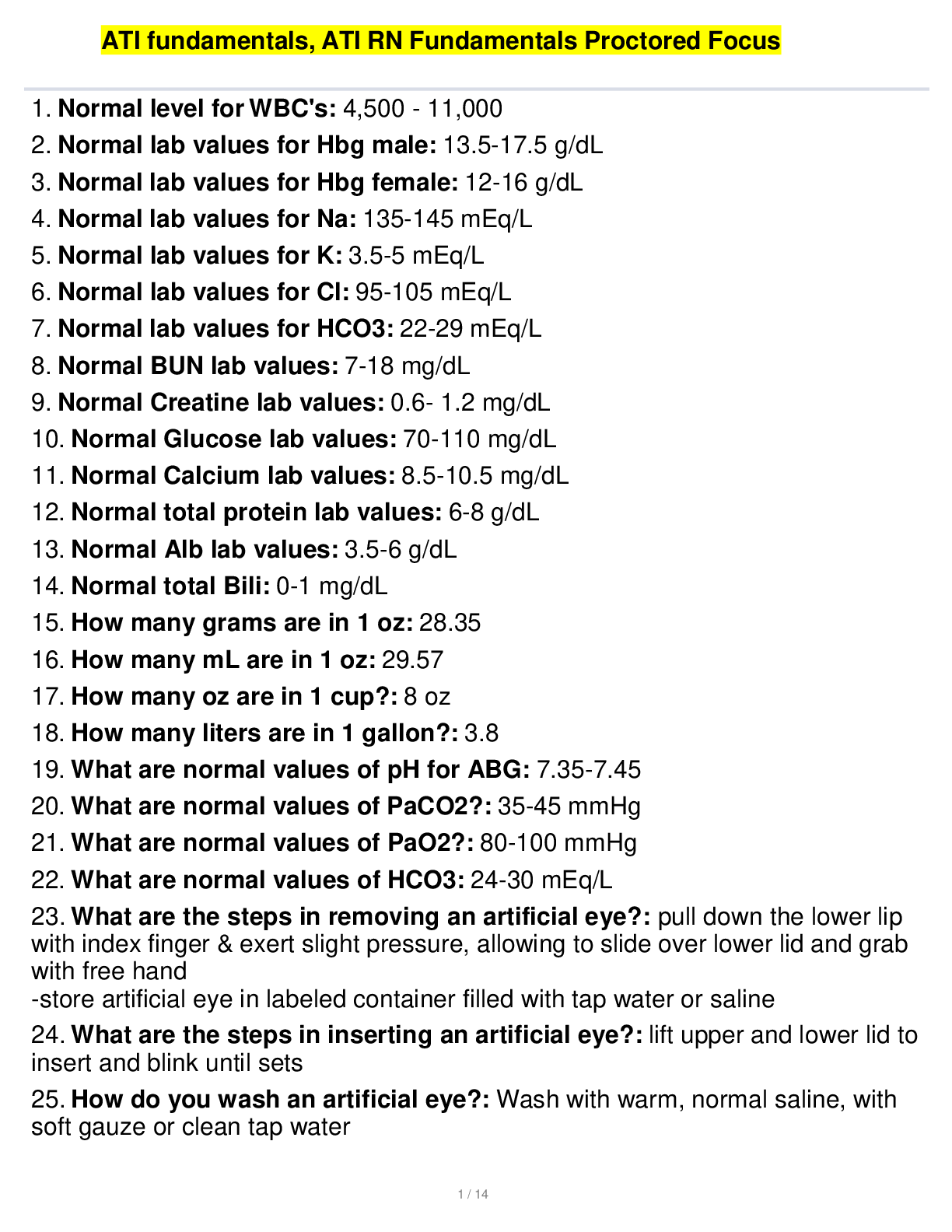
Buy this document to get the full access instantly
Instant Download Access after purchase
Add to cartInstant download
Reviews( 0 )
Document information
Connected school, study & course
About the document
Uploaded On
Mar 09, 2024
Number of pages
14
Written in
Additional information
This document has been written for:
Uploaded
Mar 09, 2024
Downloads
0
Views
12

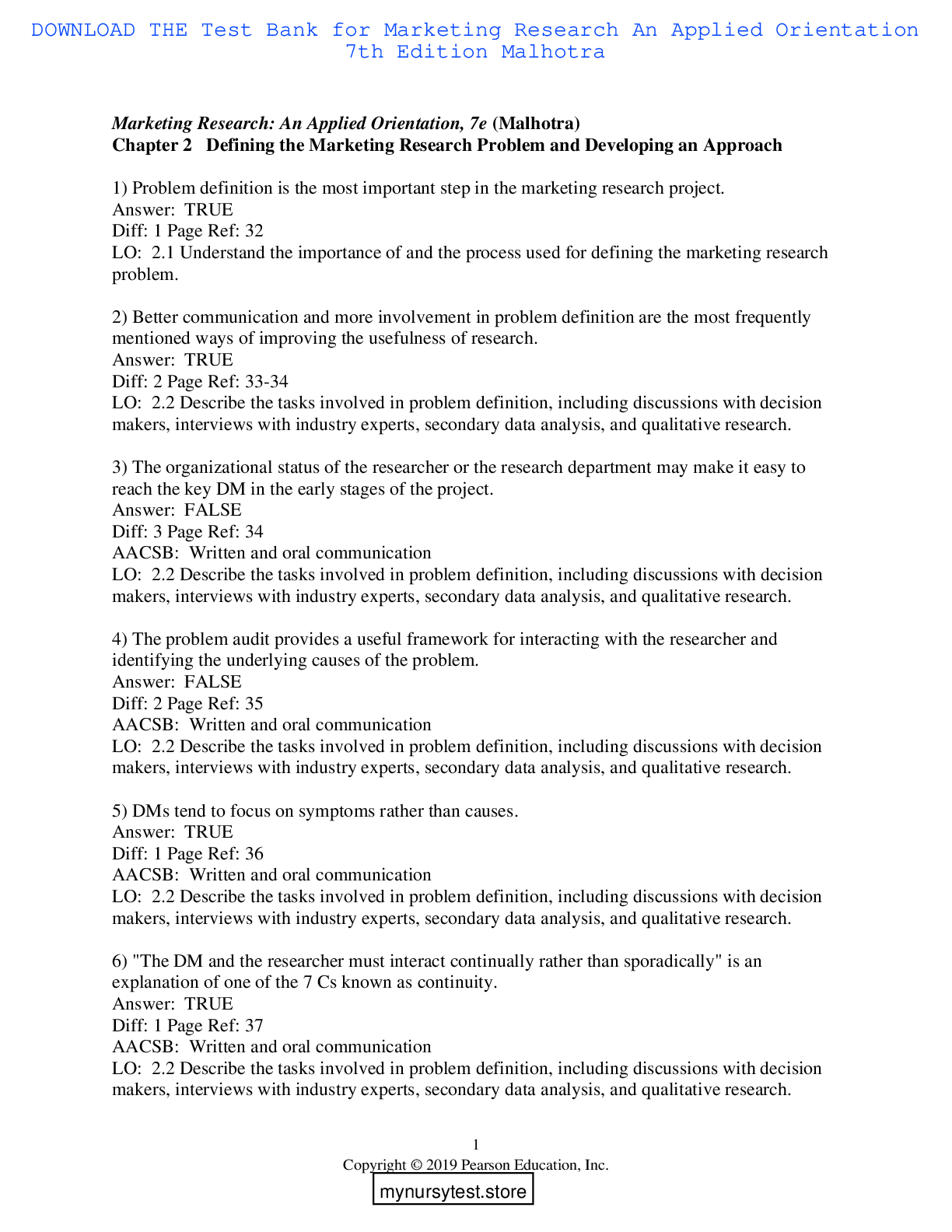


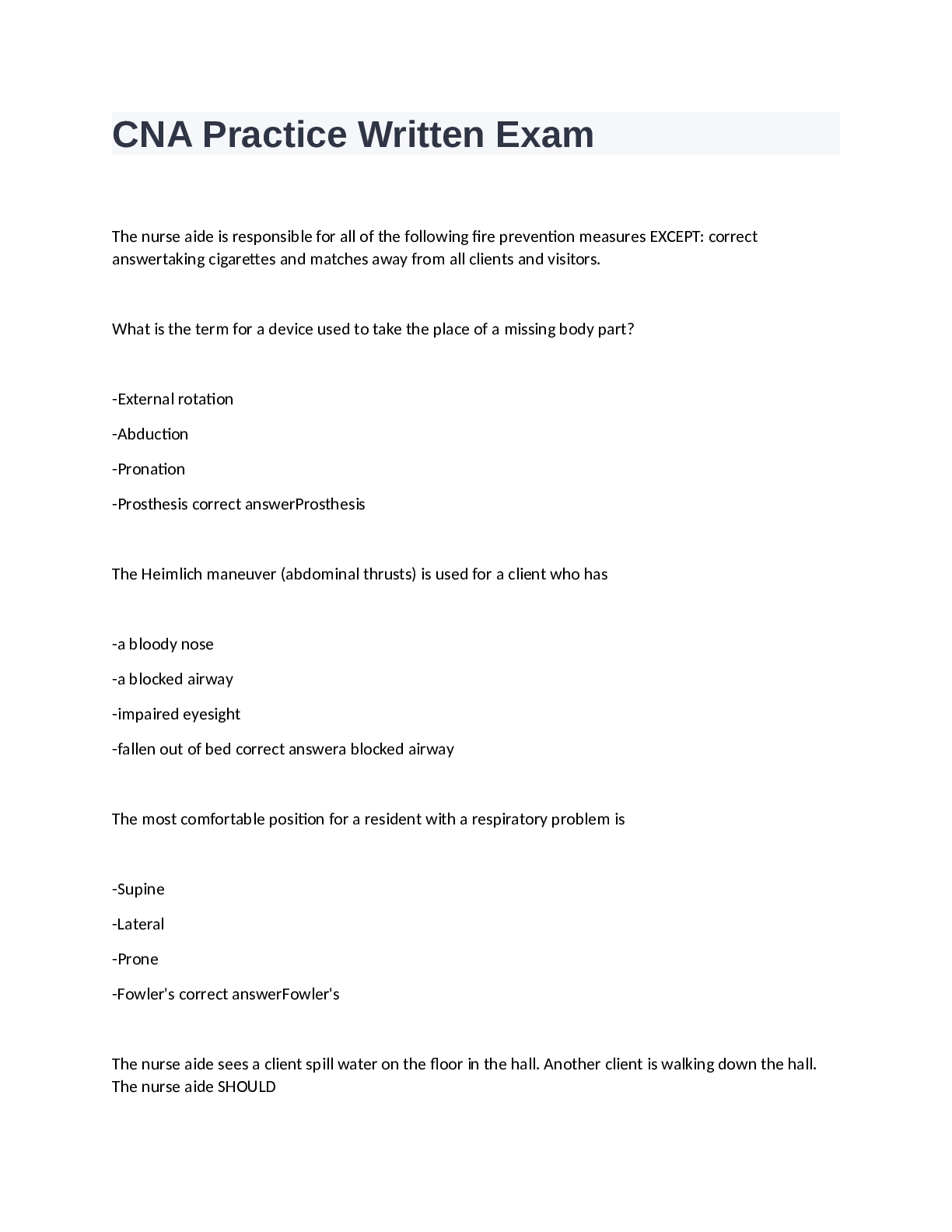

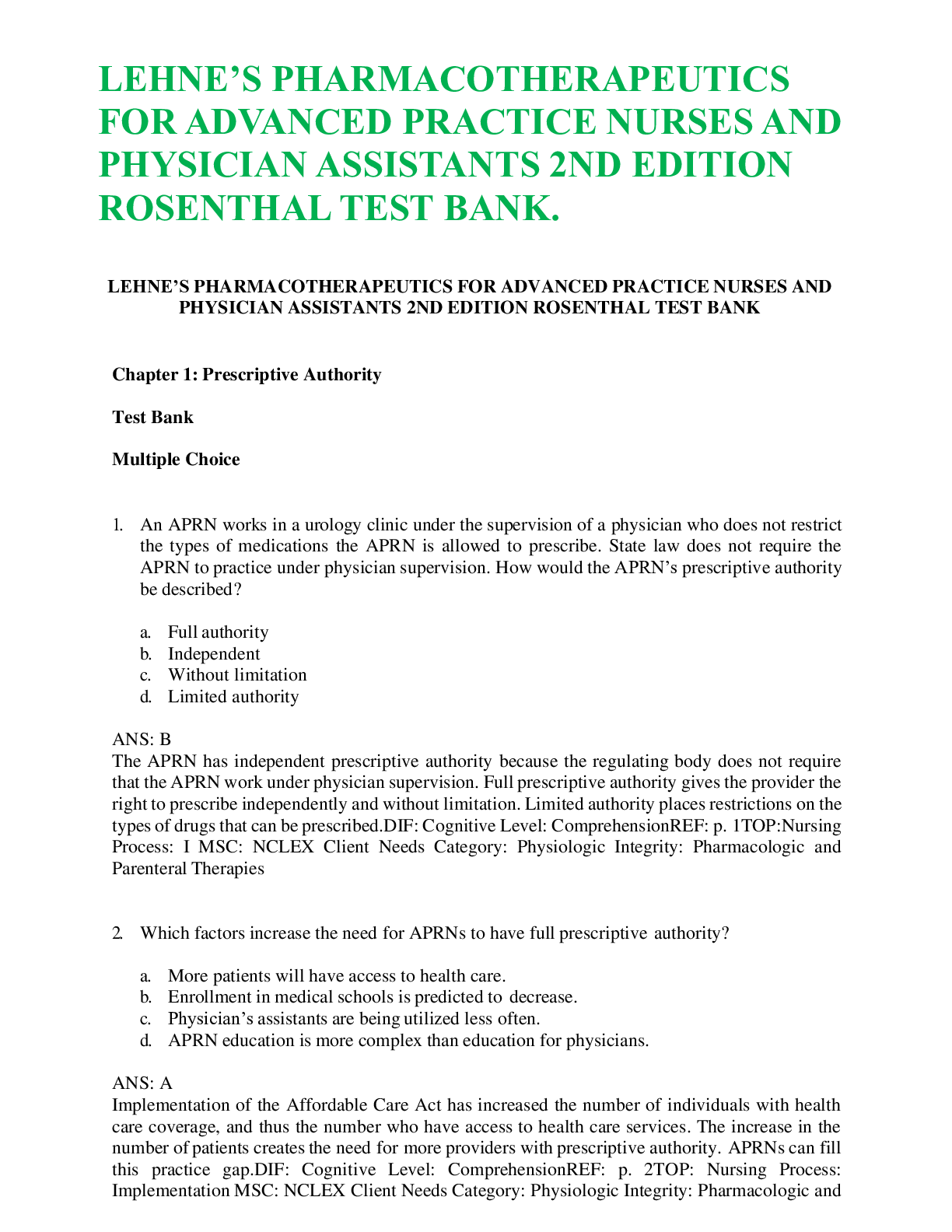

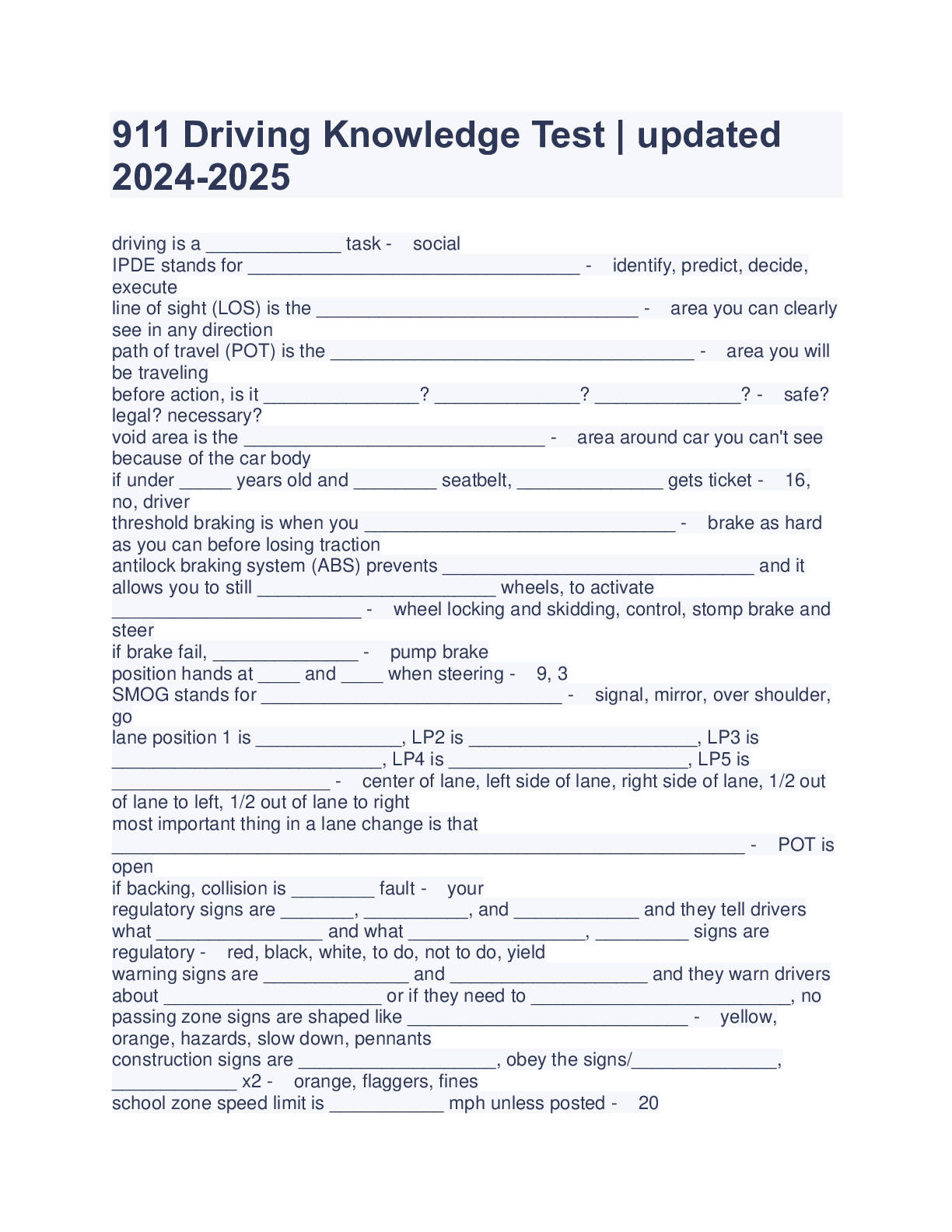
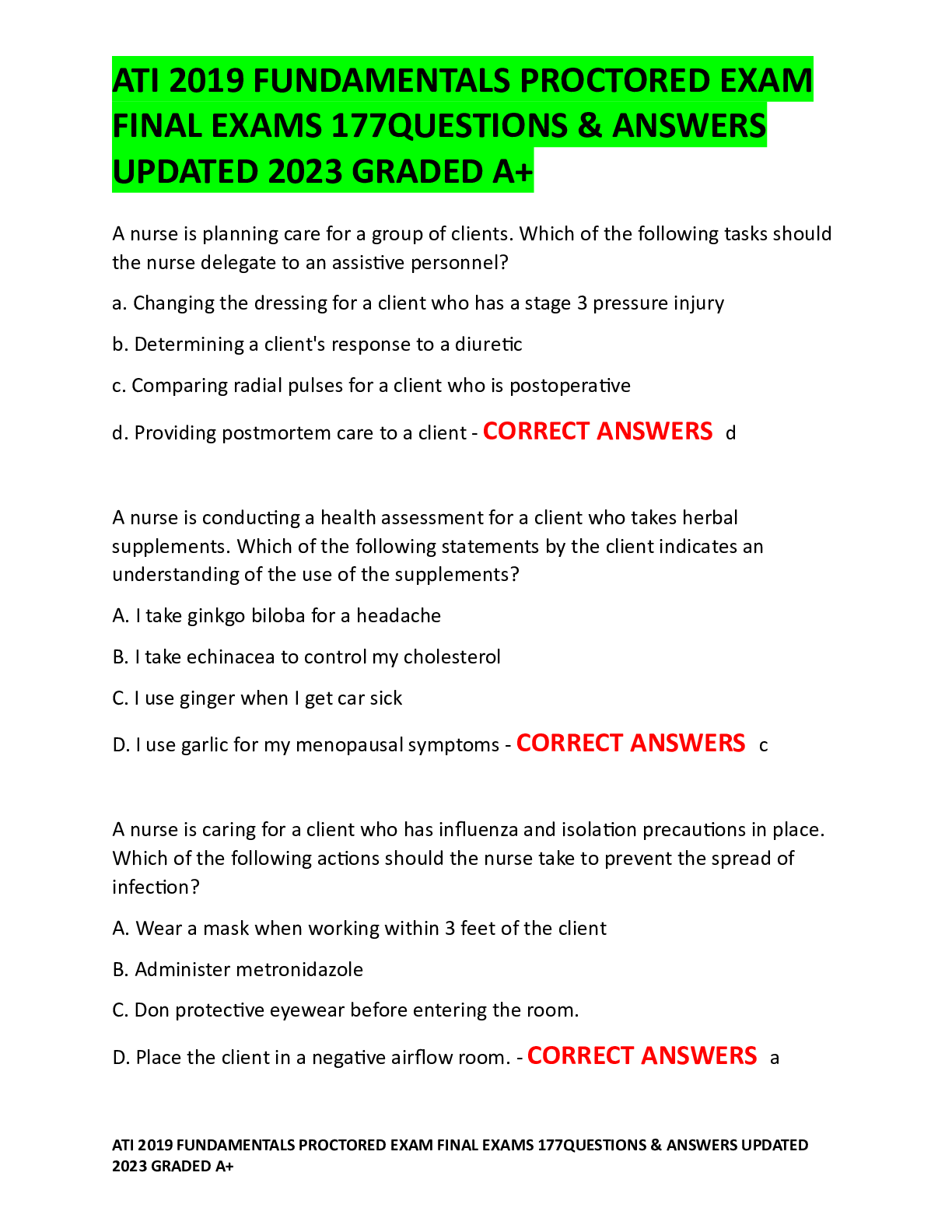



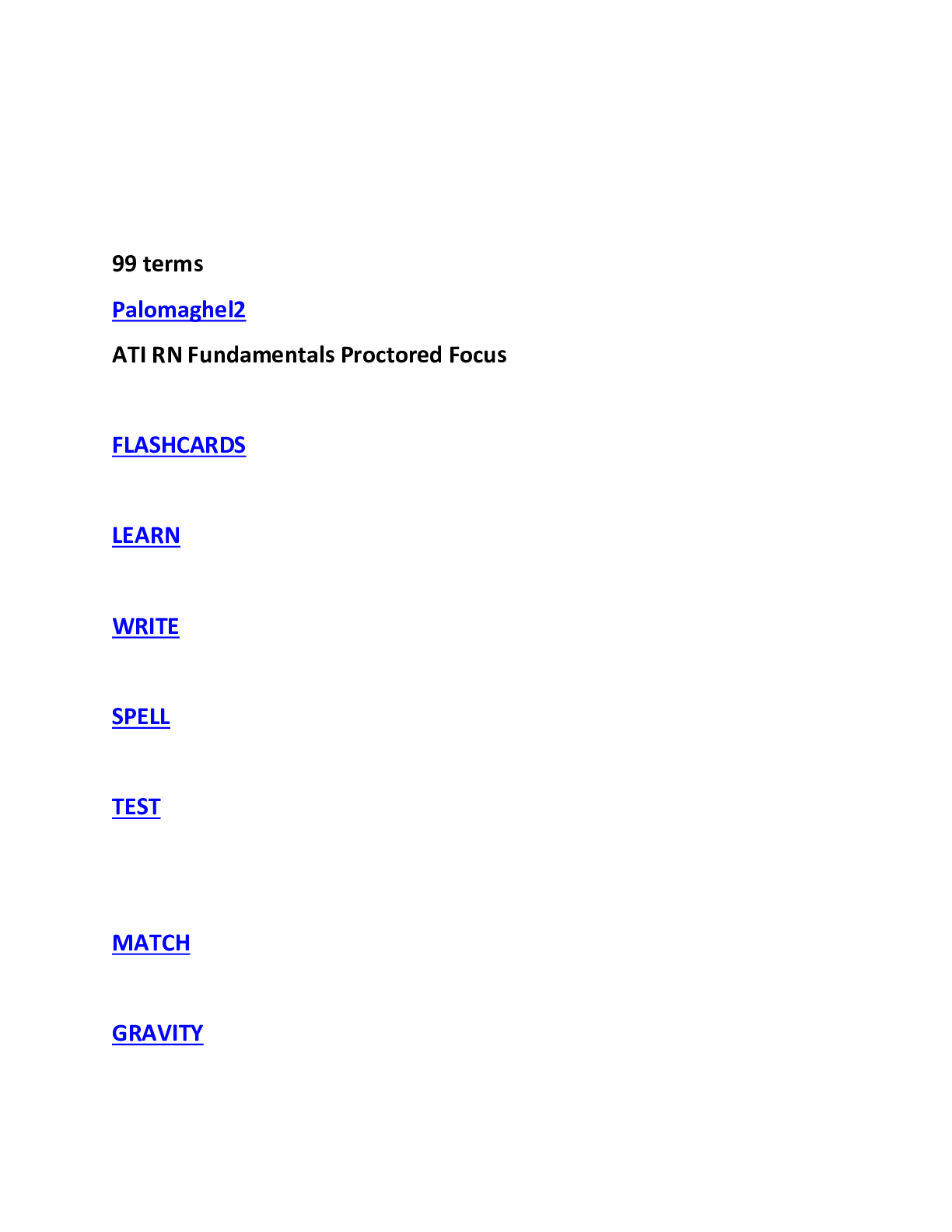

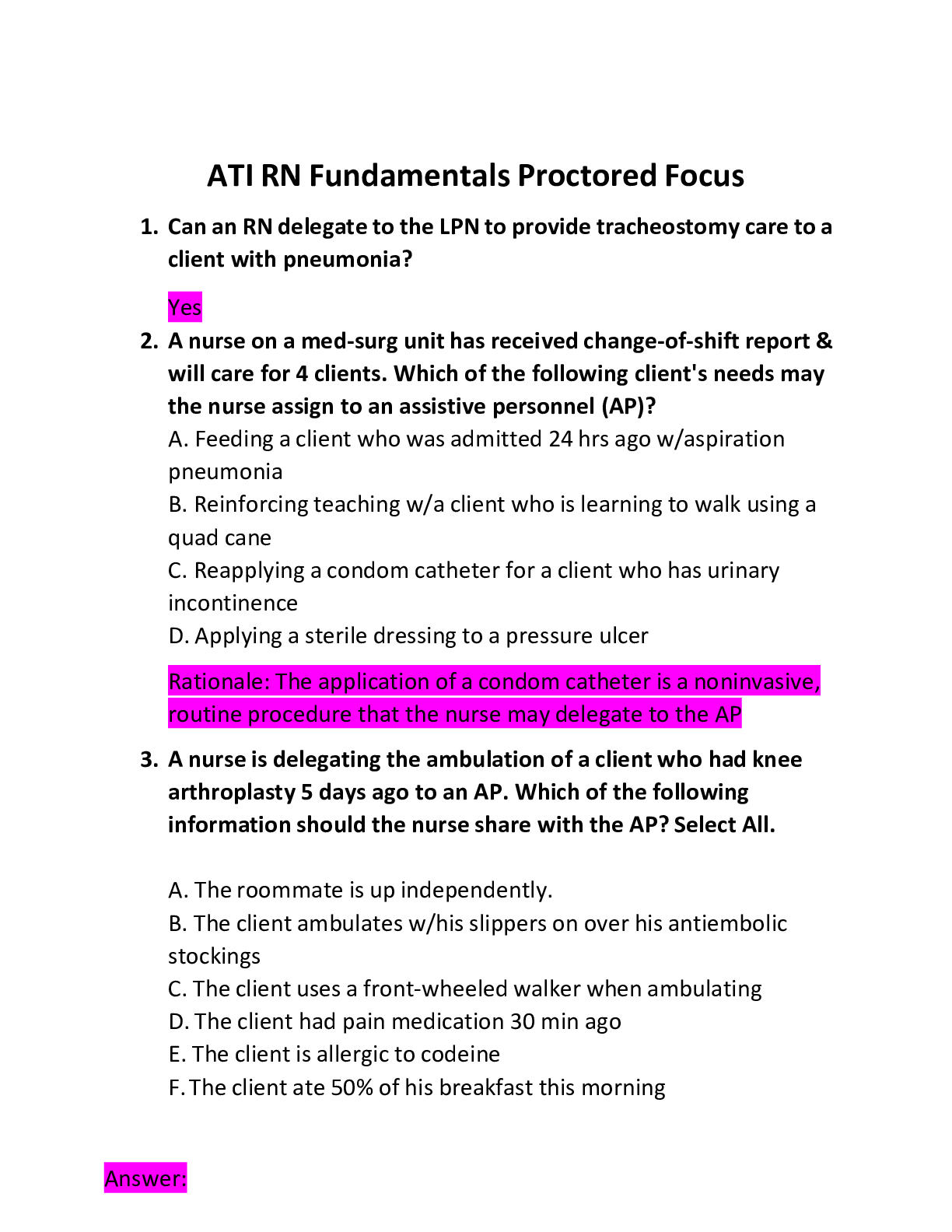
 ATI RN Fundamentals Proctored Focus, Latest Questions and Answers with Explanations, All Correct Study Guide.png)
